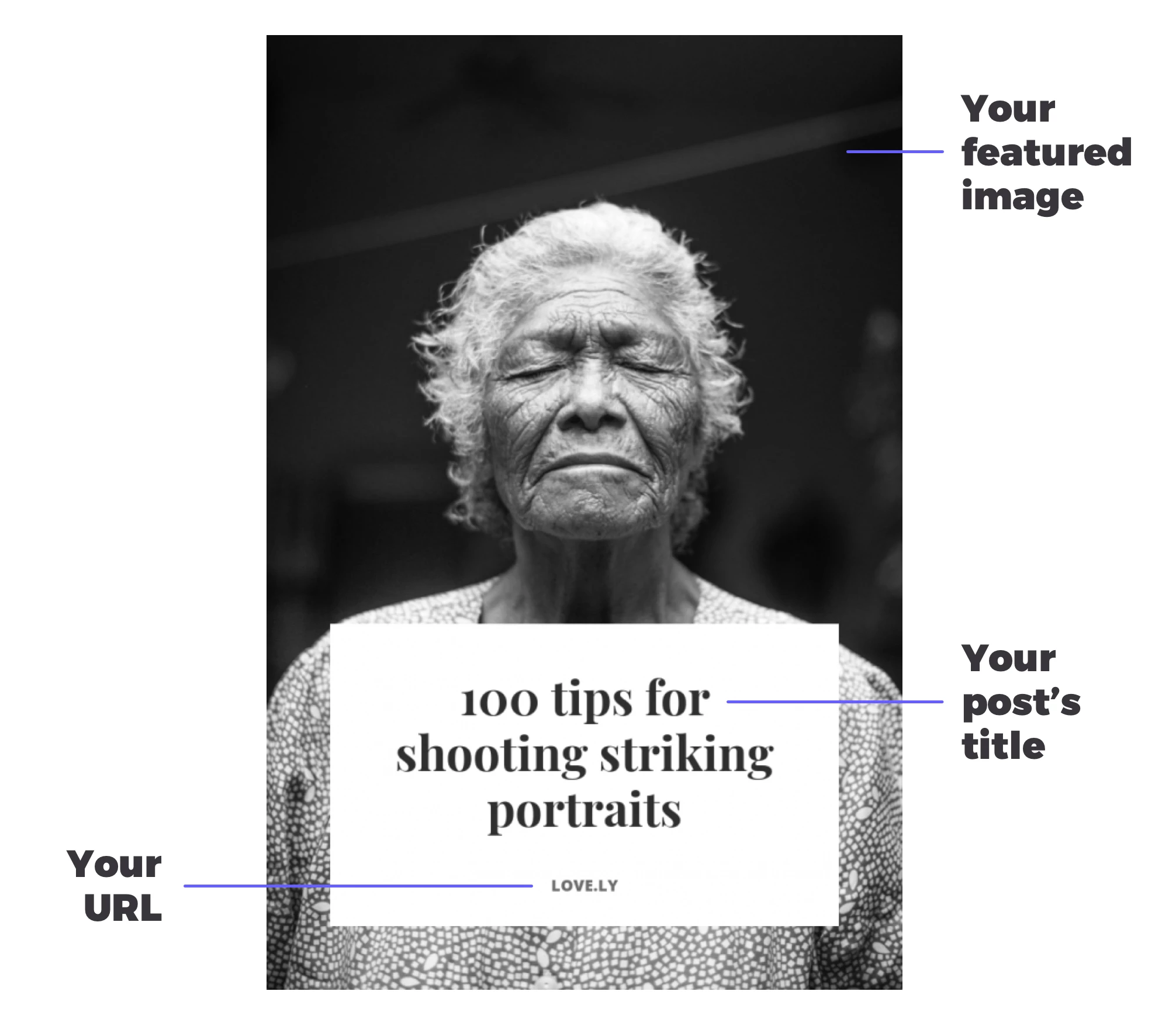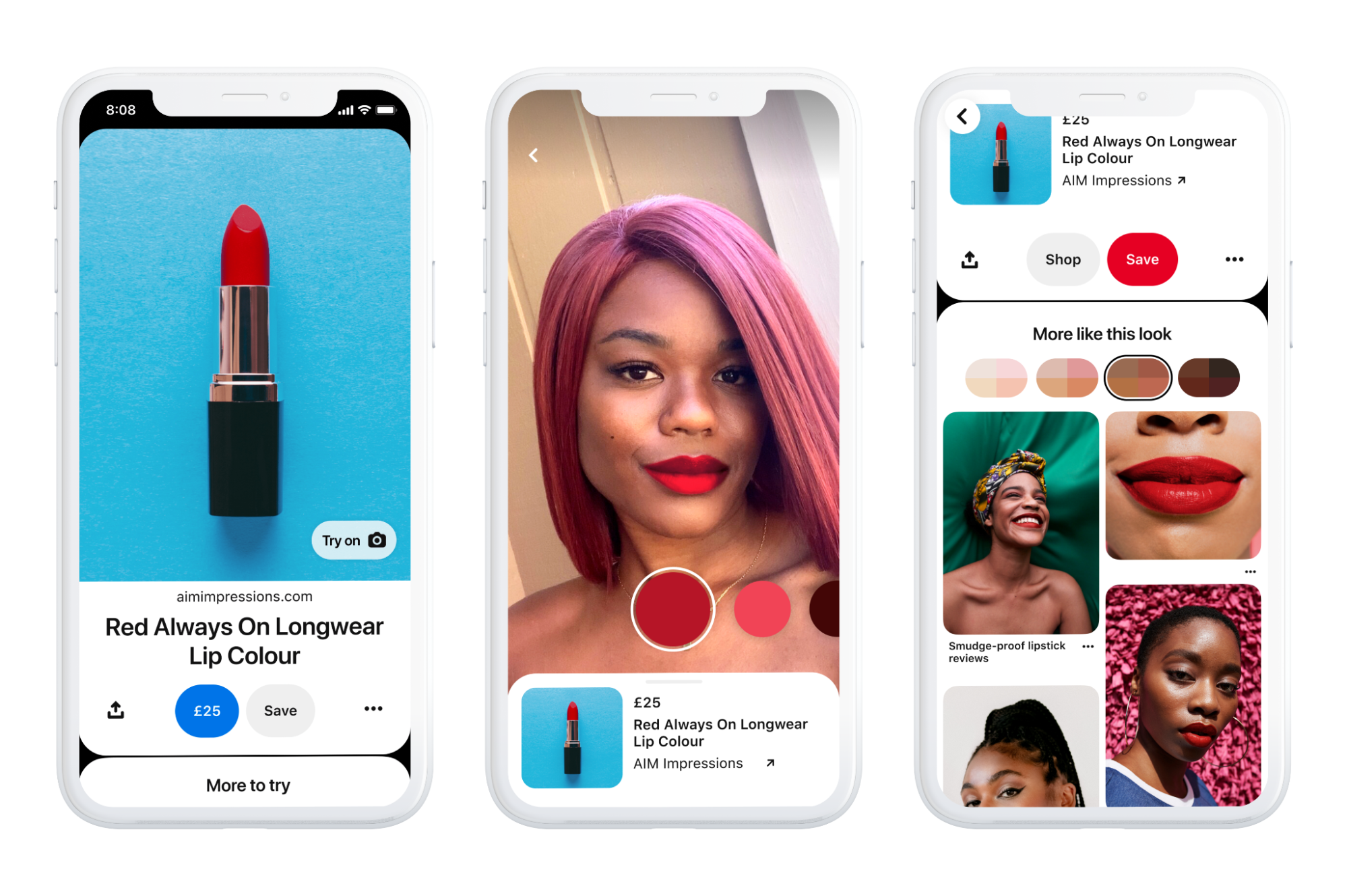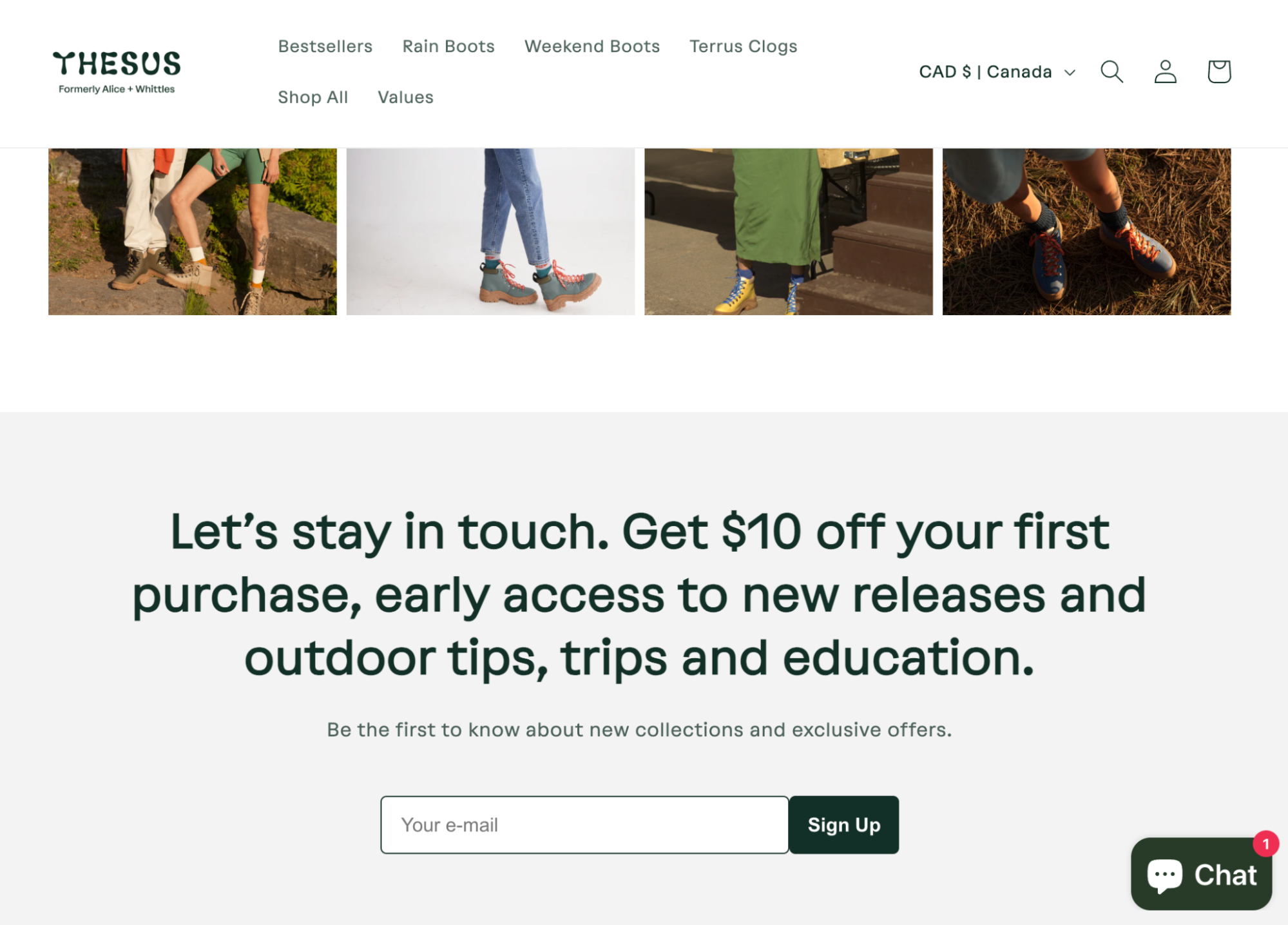Looking to earn money as an affiliate marketer? Consider Pinterest, a social media platform with 518 million monthly users and a reach that covers everyone from Gen Z to high-income households.
With a good eye, creativity, and some interesting products to share, you can leverage Pinterest to drive affiliate sales. Ahead, learn how to put your Pinterest account to work and generate passive income on the platform.
What is Pinterest affiliate marketing?
Pinterest is a social media network and visual-based search engine where users can discover new products and ideas, and find inspiration. Content is formatted as “pins,” which contain images and links to a website. Users browse and save pins to create virtual mood boards.
Pinterest affiliate marketing is a type of affiliate marketing where sales are referred through the Pinterest platform. Affiliate marketers pin images and videos on virtual boards and include affiliate links to products and services. If visitors click items tagged in the pins and buy them, the affiliate receives a commission from that purchase.
More targeted than social commerce, Pinterest affiliate marketing builds on the idea of community and shared interests. If you are promoting products on Pinterest, you are typically reaching an audience with interests in niche markets such as travel, home decor, food, and other visually appealing areas.
Get paid by brands you love with Shopify Collabs
Shopify Collabs makes it easy to find brands that match your vibe, build affiliate relationships, get paid for what you sell, and track everything in one place.
Learn more
Should I use Pinterest for affiliate marketing?
As an affiliate marketer, you can use Pinterest to drive traffic to your affiliate content, whether that’s blog posts, affiliate landing pages, or YouTube videos.
Like with other affiliate programs such as Shopify affiliates, the more people who see your link, the higher chance you have of generating affiliate sales and earning commission. “I’ve been able to grow my Pinterest following to almost 50,000 and get 50% of my blog traffic from it,” says Daniella Flores, founder of the affiliate website I Like to Dabble.
More than a social media platform, Pinterest is a visual search engine. According to Pinterest, 80% of pinners discover new brands and products on the platform each week, making Pinterest a valuable channel for marketers partnering with affiliate programs.
9 Pinterest affiliate marketing tips to earn passive income
- Know the rules
- Create several pins per post
- Schedule pins in advance
- Enable rich pins
- Pin to group boards
- Optimize for SEO
- Build an email list through Pinterest
- Analyze pin performance
- Promote high-performing pins
If you decide that Pinterest is a marketing channel to invest in for your affiliate marketing business, find relevant affiliate marketing programs through affiliate networks and set up a Pinterest account. Here are some tips to help you get started and make money as a Pinterest affiliate marketer.
1. Know the rules
Do your due diligence and learn the rules for creating, pinning, and sharing affiliate content on Pinterest. Key guidelines to follow as an affiliate marketer include:
- No cloaking: Pinterest’s community guidelines advise against shortening or concealing affiliate URLs, encouraging a “no surprises principle” where Pinners can “reasonably anticipate” where a link directs.
- Disclose affiliation: The Federal Trade Commission requires affiliates to label affiliate content as “sponsored” or “affiliated.” Follow the rules by adding disclaimers to your pins and landing pages.
- No fake accounts: Re-pinning your content via alias accounts is against Pinterest’s guidelines.
Violating any of these guidelines could result in your Pinterest content being blocked.
2. Create several pins per post
For each affiliate marketing post you create, generate several pins containing that affiliate link. The more affiliate pins you have, the more opportunities you have for audience engagement, which can include saves, clicks, video views, comments, and follows. The threshold of good engagement typically starts at 1%.
You can search for pins on Pinterest by keyword or phrase, for example. Take a look at the search results for your industry or niche. Chances are, there’s a range of visual content on display, from black and white photos to colorful graphics.
Search results for the phrase “DIY home office ideas.” Pinterest
“You can use the multiple-pin strategy as an opportunity to go after a wider variety of keywords,” says finance affiliate marketer R.J. Weiss. “If you have a post on making money, you could create a pin optimized for many related keywords that match the search intent of making money, for example, side hustle, earning extra cash. This can all be driven back to a single page on your site.”
There’s no rule on how many affiliate pins you can create for a single piece of content or link. The key to a successful pin is a high-quality graphic that will stand out from the crowd. Try experimenting with different pin templates, including:
- Vertical and horizontal images
- Black and white photos and ones with color
- Stock imagery and graphics
- Text-heavy and visually focused content
Still, creating new pins can be time-consuming. Bryan Maniotakis, owner of Minimal Goods, which curates minimally designed home and office products, is one affiliate marketer using automation to speed up the process.
“I’m currently using an automation tool to automatically generate a Pinterest banner whenever it detects a new article on my site,” Bryan says. “Overall, it saves me a ton of time every single month, because I no longer have to generate these Pinterest assets manually.”

Placid auto-creates Pinterest images based on your content. Placid
3. Schedule pins in advance
Other time-savers include tools to schedule pins in advance. A few examples are Tailwind, Later, and Hootsuite. They allow you to set a custom schedule, add new content to your queue, then automatically add pins to your board.
By scheduling pins in advance, you can maximize the chance of reaching users when they’re online.
4. Enable rich pins
Rich pins are more descriptive than standard images you’ll see on the platform. They show extra information in the pin description itself, demanding more attention on a crowded feed—and, therefore, increasing your chances of driving traffic through Pinterest.
 Pinterest
Pinterest
Enable rich pins for:
- Products. Show up-to-date pricing and availability in your rich pin.
- Recipes. Show cooking time, rating, ingredients, and serving sizes in your rich pin.
- Articles. Show the headline, description, and author in your rich pin.
The process for creating and enabling rich pins only needs to be completed once. Follow this process and all future eligble pins will become rich pins.
5. Pin to group boards
Not all Pinterest boards have to be an individual’s mood board. Group boards exist to help multiple users share content to one board. A natural byproduct of this community-style board is greater awareness. Users promote pins to each other’s audience.
Find relevant boards in the niche your affiliate products fall into using tools like Pingroupie.
If you’re an affiliate for craft products, for example, Crochet Community Board would be one worth contributing to.
Read group board descriptions for guidance on how to become a contributor. Many require you to follow the creator of the board.
You’ll also find terms for posting new content to a new group board. Some admins don’t allow affiliate links directly to product pages—work around this by using blog content or a YouTube video as your landing page.
6. Optimize for SEO
Pinterest is effectively a visual search engine, which means you should optimize your profile to reach existing and potential buyers when they are actively searching.
To accomplish this, utilize SEO best practices, such as using keywords with purchase intent and rich pins, which automatically pull metadata so your pins stay up-to-date. This can help increase traffic and user engagement, build brand awareness, and strengthen audience loyalty because your pins provide current and helpful information.
“People who use Pinterest are seeking information,” says Mitchell Stern, owner of the website SideHustle.Tips. “Employ all the usual SEO best practices when writing your title and description. Pick your keyword wisely and you can go viral in a matter of hours.”
The Pinterest algorithm connects pins with keywords. So, start by finding the keywords your target audience is searching for. Several keyword tools exist to help you conduct keyword research—some are even free. Try free versions of Ahrefs, Moz Keyword Explorer, or Keyword Everywhere.
Growth marketing consultant Matt Lally, founder of MattyAds, shares his process of discovering lucrative Pinterest keywords: “Sign into Pinterest Ads and find keywords that have between 10,000 and 100,000 monthly volume. You want to use the main keywords often in your Pinboard, as well as in your pin creatives.”
“Take your keyword and search it on Pinterest,” Matt continues. “Find what style of content ranks well and produce four to six separate variations.”
Once you have your keywords, focus on several areas to help successfully implement your Pinterest SEO, including:
- Pinterest profile. Include relevant keywords that tie into the overall theme of your content within your account bio. If you’re promoting health supplements, for example, include terms like “women’s health” in your account description.
- Pin description. Get more granular with the keywords related to each individual pin. If you’re sharing a pin for a tutorial on how to tie shoelaces, for example, use the “how to” keyword in your pin description.
- Board description. Boards are more specific than a profile, but not as targeted as a pin. Use middle-ground keywords in your board title and description, such as “shoe tutorials” or “women’s health tips.”
7. Build an email list through Pinterest
“Pinterest can be tough for affiliate marketers because people use the platform aspirationally,” says Monica Lent, founder of Affilimate. “Most pinners aren’t looking to solve an immediate problem and make a purchase to do so. They’re planning for the future—long past the expiration date of your affiliate cookie.
“That’s why the best Pinterest affiliate marketing strategy is to capture readers’ email addresses,” she says. “That way, you can promote affiliate products through drip email campaigns that take the time to educate readers and warm them up to your offer.”
The simplest way to do this is by including an email opt-in on your landing page. Invite Pinterest visitors to join your mailing list by giving an incentive—such as a content-centered lead magnet, discount code, or other perk or freebie. Then, build an email campaign that continues to nurture that relationship.

When navigating to Thesus’ website, Pinterest visitors can opt in to subscribe to the brand’s email. Thesus Outdoors
8. Analyze pin performance
Use Pinterest’s built in data tool, Pinterest analytics, to analyze your monthly performance. Assess your best pins, user interactions, and topics of interest to your audience, to gain insights about how to improve your content.
Also consult your affiliate dashboard to see how many people purchased the items you promoted via Pinterest.
Metrics to consider during your evaluation include:
- Click-through rate. What percentage of people see your pin and click it? Do specific pins get more clicks? Do pins with an endorsement from a well-known blogger or influencer drive more traffic than those without?
- Time on site. How do Pinterest users differ from visitors from other traffic sources? Assess ecommerce analytics: a high time on site and low bounce rate indicates your pin matches the contents of your landing page.
- Conversions. Pay close attention to your conversion rate on items you heavily promoted with minimal product sales, or items you’ve not promoted with high conversion rates. Tweak your content strategy accordingly.
9. Promote high-performing pins
Bolster your marketing efforts by buying ads on Pinterest. According to Pinterest, the best performing ads often:
- Feature high-resolution, vertical images
- Center your brand
- Have reliable links
- Contain clear copy
Promoting high-performing pins together with organic pins can drive more traffic and grow your audience. Use sponsored pins to promote an affiliate link directly or drive users back to your affiliate marketing content.
Make money online with Pinterest
Pinterest marketing is a valuable asset for many online businesses—affiliate marketers included.
Use the tips in this guide to create search-optimized pins that stand out and drive traffic to your affiliate content. There’s no reason why Pinterest can’t become an evergreen source of commission with a little upfront investment.
Become a Shopify Affiliate
Join the program to grow your brand, access exclusive opportunities, and earn a competitive commission for each new business you refer to Shopify.
Apply now
Pinterest affiliate marketing FAQ
Why should I have a Pinterest affiliate marketing strategy?
Developing a Pinterest affiliate marketing strategy can help you monetize your pins on Pinterest and earn money in the form of commissions from brands. Pinterest is one of many platforms you can use for affiliate marketing. It can be especially profitable if you have the right audience of Pinterest users and promote affiliate pins in popular categories.
How do I share affiliate links on Pinterest?
To share an affiliate link on Pinterest, create a Pinterest business account, load a new pin, and enter a direct affiliate link as the source URL. You can also direct people to affiliate-related content, such as blog posts or videos, to prime users before they purchase. Affiliate pins and other content should disclose affiliate links where it is required by law.
Can I earn money from Pinterest?
Yes, it’s possible to make money online through Pinterest by sharing affiliate links on the platform. You’ll earn commission—the percentage varies by brand—when users purchase products through your affiliate link. To get started, create a Pinterest account, join an affiliate marketing program, and share your affiliate products and links in your pins.
Does Pinterest allow ClickBank links?
Marketers are allowed to share links from various affiliate networks, including ClickBank. Just make sure you follow Pinterest’s community guidelines for sharing affiliate content on the platform.
Can I do Amazon affiliate marketing on Pinterest?
Pinterest allows users to share affiliate links from Amazon Associates. These links must be clear, as the Pinterest platform doesn’t allow links to be disguised.




